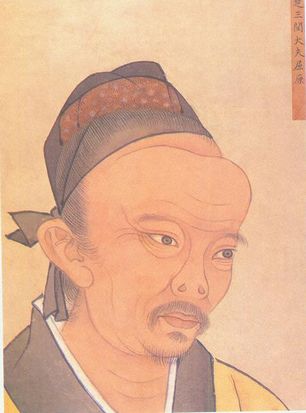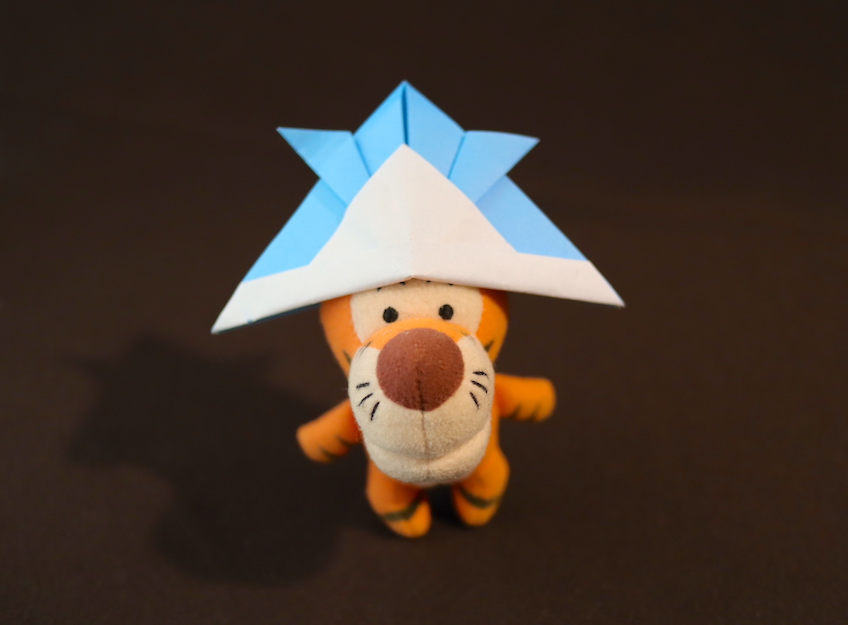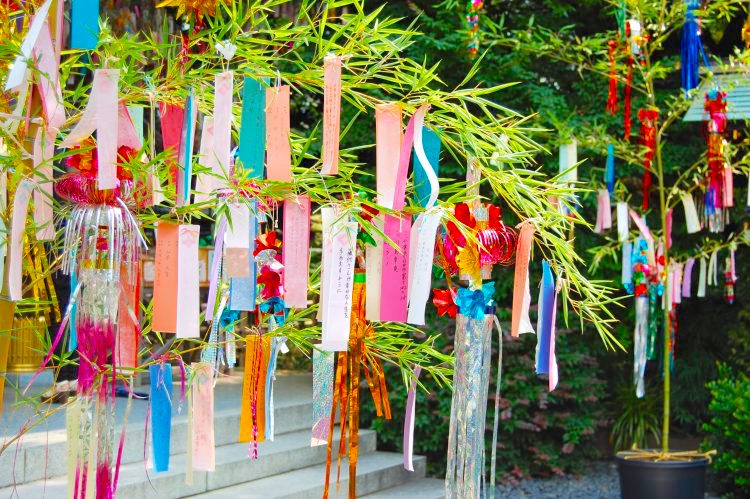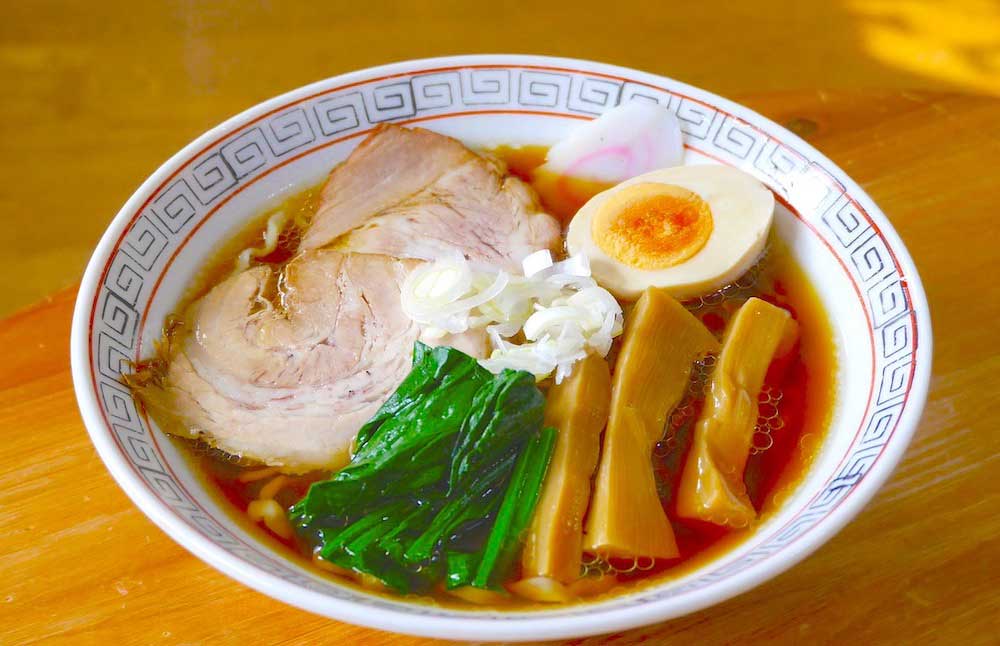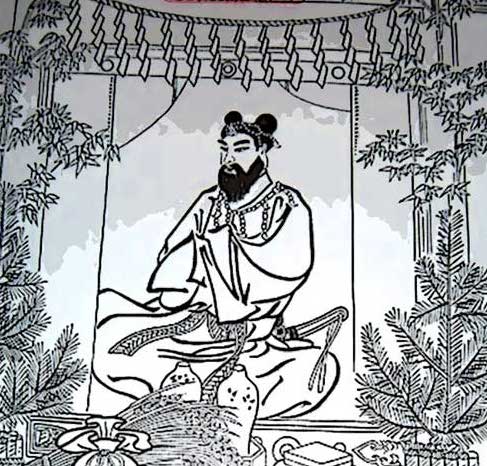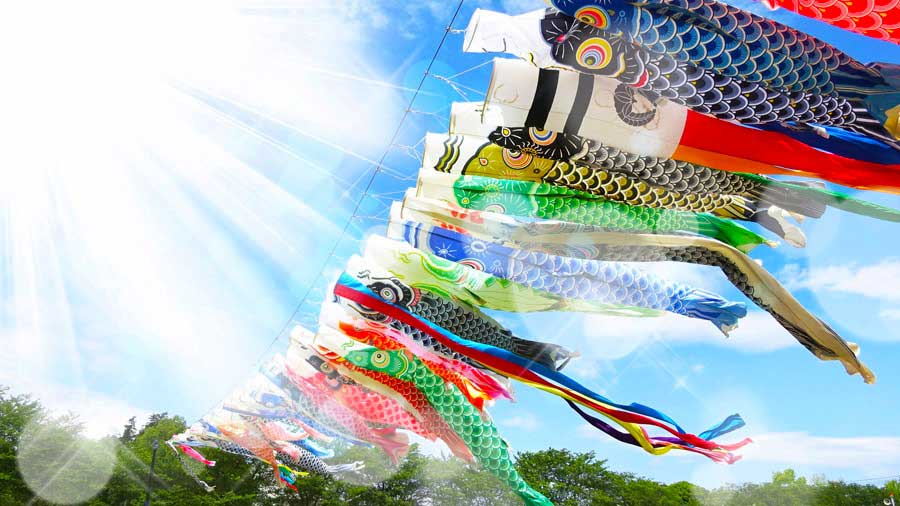
5月5日は「こどもの日」、そして男の子の成長を祝うお祭り「端午の節句」です。
ひと昔前に比べて減ってきてはいるものの、小さな男の子のいるご家庭では、ご自宅に兜や五月人形を飾ったり、鯉のぼりを立てたりする風習があります。
そもそも端午の節句とはどういうものなのか、いざ説明するとなると意外と難しいのではないでしょうか。
今回は、端午の節句について、兜人形(五月人形)や鯉のぼり、柏餅なども含めて様々な英語表現をご紹介していきます。
ご興味のある方は、当サイトで 英語クイズ(5000問) を出題しておりますので是非ご覧ください。
目次
↓ 端午の節句の歴史や由来などの英語表現はこちら
端午の節句の説明
端午の節句は一般的に、
- Boys’ Festival
- Boys’ Day
- Children’s Day
などと訳されますが、簡単に「男の子の成長と健康を祝うお祭り」と表現する場合は、以下のような言い方があります。
- a festival for celebrating boys’ growth and good health
(男の子の成長と健康を祝うお祭り) - an occasion for celebrating a boy growing up
(男の子の成長を祝う行事)
Tango-no-sekku is also called “Boys’ Festival” or “Children’s Day.”
(端午の節句は「男の子のお祭り」または「子供の日」とも呼ばれます。)
The Boys’ Festival is an annual event held on May 5 that celebrates the healthy growth of male children.
(端午の節句とは、5月5日に行われる年中行事で、男の子の健やかな成長をお祝いします。)
The Boys’ Festival is a day to celebrate the healthy growth of male children.
(端午の節句は、男の子の健やかな成長をお祝いする日です。)
The Boys’ Day is a Japanese annual event expressing hope that each boy in the family will grow up strong and healthy.
(端午の節句は日本の伝統的な年中行事で、子供たちが強く健康に育つことへの願いが込められています。)
On the Boys’ Festival, families with boys fly carp streamers, called koinobori outside the house, and they display gogatsu-ningyō (a samurai armor doll) or kabuto (a samurai helmet) inside the house.
(端午の節句では、男の子のいる家庭では家の外に鯉のぼりを立て、家の中に五月人形や兜を飾ります。)
While the Girl’s Festival is known as “Momo-no-Sekku,” the Boy’s Festival is called “Tango-no-sekku.”
(女の子のお祭りは「桃の節句」として知られているのに対して、男の子のお祭りは「端午の節句」と呼ばれます。)
Families with boys display samurai helmets and put up carp streamers to pray for success in life.
(男の子のいる家庭では、兜を飾ったり鯉のぼりを立てたりして、立身出世を祈ります。)
At homes with sons, people display a samurai warrior doll called gogatsu-ningyō and raise a carp-shaped streamer called koinobori in the garden.
(男の子のいる家庭では、武士を模した五月人形を飾り、お庭に鯉のぼりを立てます。)
Families with boys display a samurai helmet replica or a samurai warrior doll inside the house and set up carp streamers outside.
(男の子のいる家庭では、家の中に兜や鎧を飾ったり、外に鯉のぼりを立てたりします。)
Families with boys celebrate the day by putting up koinobori (carp streamers) outside their homes, displaying kabuto (a samurai warrior helmet) in the room, and eating kashiwa-mochi (rice cakes wrapped in an oak leaf) or chimaki (steamed rice dumplings wrapped in bamboo leaves).
(男の子のいる家庭では、家の外に鯉のぼりを立てたり、お部屋に兜を飾ったり、柏餅やちまきを食べてお祝いします。)
Displaying the samurai warrior’s suit of armor has the meaning of protecting the boys’ bodies.
(鎧兜の飾るのは、男の子の命を守るという意味があります。)
May 5th is currently known as “Children’s Day.”
(現在、5月5日は「こどもの日」として知られています。)
“Children’s Day” is one of the national holidays in Japan.
(「こどもの日」は日本の祝日のひとつです。)
Children’s Day originated as TangoNo-Sekku or Boys’ Day.
(こどもの日は「端午の節句(男の子の日)」が基になっています。)
In 1948, after World War II, “Tango-no-sekku” was renamed “Kodomo-no-hi” and expanded to include girls.
(第二次世界大戦後の1948年、端午の節句は女の子も含まれ「こどもの日」となりました。)
On that day, eating kashiwa-mochi and chimaki is customary.
(こどもの日には、柏餅や、ちまきを食べる習慣があります。)
In the Kanto (Eastern Japan) area, people eat kashiwa-mochi, while in the Kansai (Western Japan) area, people eat chimaki.
(関東では柏餅を食べるのに対し、西日本ではちまきを食べます。)
兜と五月人形
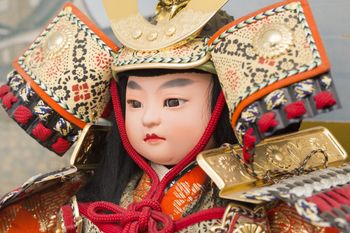
端午の節句を説明する上で欠かせない、兜や五月人形を英語で言うとどうなるでしょうか?
兜は helmet と訳されますが、このままですと日本独特の武士の兜がイメージされにくいので、海外でも有名な samurai(侍)を入れて、
- samurai warrior helmet
- samurai armor helmet
- samurai helmet replica
などであれば伝わりやすくなります。
◆ これと同様に、五月人形の場合は helmet を doll に代えたりして、
- samurai warrior doll
- samurai armor doll
- heroic samurai warrior doll
- samurai doll in armor
- doll warrior
- warrior’s suit of armor
などと言うのが良いでしょう。
◆「端午の節句の人形」とだけ説明する場合は、
- doll warrior for Boys’ Day
- doll displayed for Boys’ Festival
- dolls for Tango-no-sekku
などのシンプルな言い方があります。
鯉のぼり
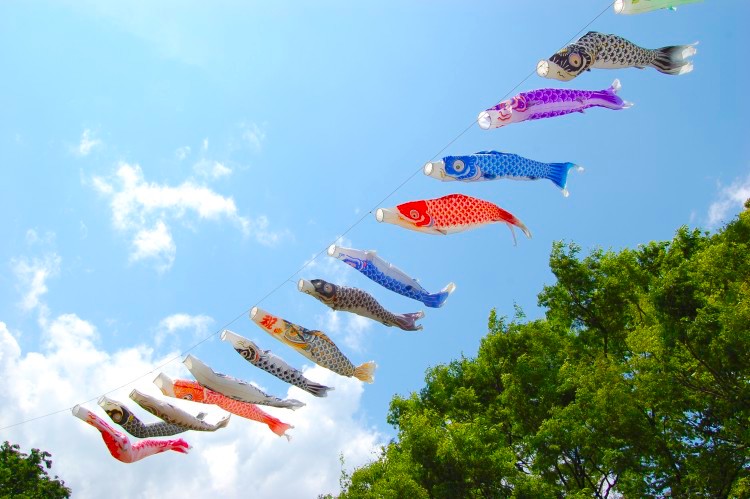
鯉のぼりは、以下のような言い方があります。
- carp streamer
- carp-shaped streamer
- carp-shaped wind socks
- colorful carp kites
- carp flags
- flying koi fish
carp は鯉で、streamer とは「吹き流し」のことです。
In Japan, carp is thought to be a lucky fish symbolizing success in life.
(日本では、鯉は出世魚といわれ縁起が良いとされています。)
Carp have the strength and endurance to swim even up waterfalls and have long been taken as a symbol of success in life.
(鯉は滝でも泳いでのぼってしまう強さと忍耐力があり、昔から立身出世のシンボルとされています。)
Carp is said to be a symbol of courage and perseverance to accomplish great deeds.
(鯉は、偉業を成し遂げる勇気と忍耐のシンボルとされています。)
In ancient China, it was said that if a carp could climb up the waterfall of the Yellow River, it would turn into a dragon god.
(古代中国では、黄河の滝を昇ることができた鯉は龍になれるといわれていました。)
柏餅 / Kashiwa-mochi
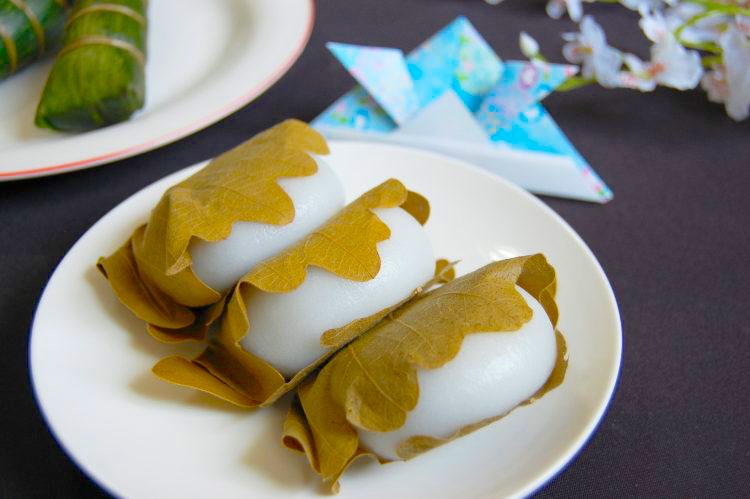
柏餅は文字通り「柏の葉で包んだお餅」で、
- rice cakes wrapped in oak leaves
- rice cakes wrapped in oak leaves with sweet adzuki bean paste inside
(あんこ入りのお餅を柏の葉で包んだもの)
Since oak leaves don’t fall until the shoots grow, they are regarded as a symbol of prosperity.
(柏の葉は新芽が出るまで落ちないことから、子孫繁栄の象徴とされています。)
ちまき / Chimaki
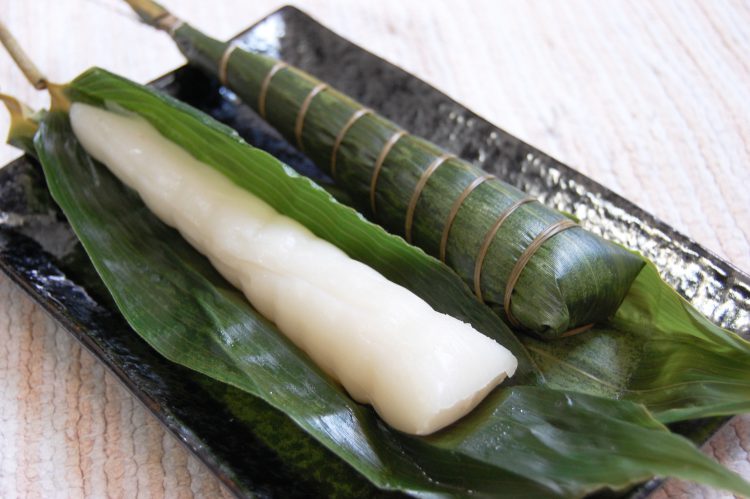
ちまきは、餅米または米粉などでつくったお餅を、茅(ちがや)の葉や笹の葉などで包んでイグサで縛り、蒸すまたは茹でたりして食べます。
- steamed rice dumplings wrapped in bamboo leaves
(笹の葉で包まれたお餅) - a kind of dumpling made of glutinous rice that is wrapped in a bamboo leaf and steamed
(餅米でつくったお団子のようなもので、笹の葉で包んで蒸してつくります)
Chimaki is traditionally eaten on May 5th, Children’s Day, in Western Japan.
(ちまきは、西日本では伝統的に5月5日のこどもの日に食べられます。)
菖蒲湯 / Shōbu-yu
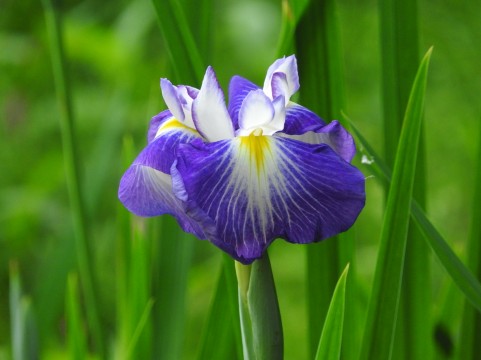
端午の節句の由来 でも触れましたが、菖蒲や蓬などの薬草は、昔から厄除けや健康のために用いられていたため、今でもその風習が残り、こどもの日には菖蒲湯に入ることも少なくありません。
「菖蒲湯」は、以下のような言い方があります。動詞には take を使います。
- a sweet-flag bath
- a bath with sweet flags
- a bath scented with iris leaves
- a bath with iris roots and leaves
- a bath with the leaves of the sweet flag
On Children’s Day, people take a bath with the leaves of sweet flag, which is believed to be a medicinal herb for driving away evil spirits.
(こどもの日には、邪気を祓う薬草といわれている菖蒲の葉を入れたお風呂に入ります。)
The day features the traditional custom of taking a bath with sweet flags, plants reputed to have medicinal qualities.
(この日は薬効があるといわれている菖蒲を入れたお風呂に入る伝統的な風習があります。)
↓ 端午の節句の歴史や由来についての英語表現はこちら
